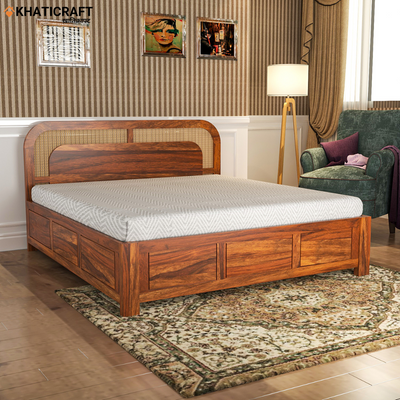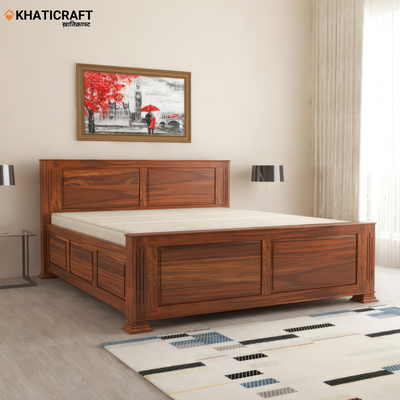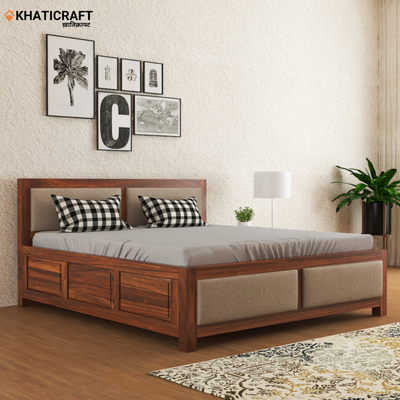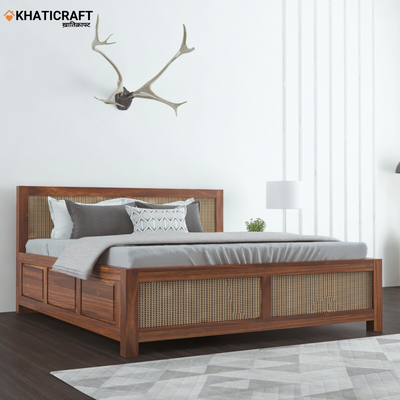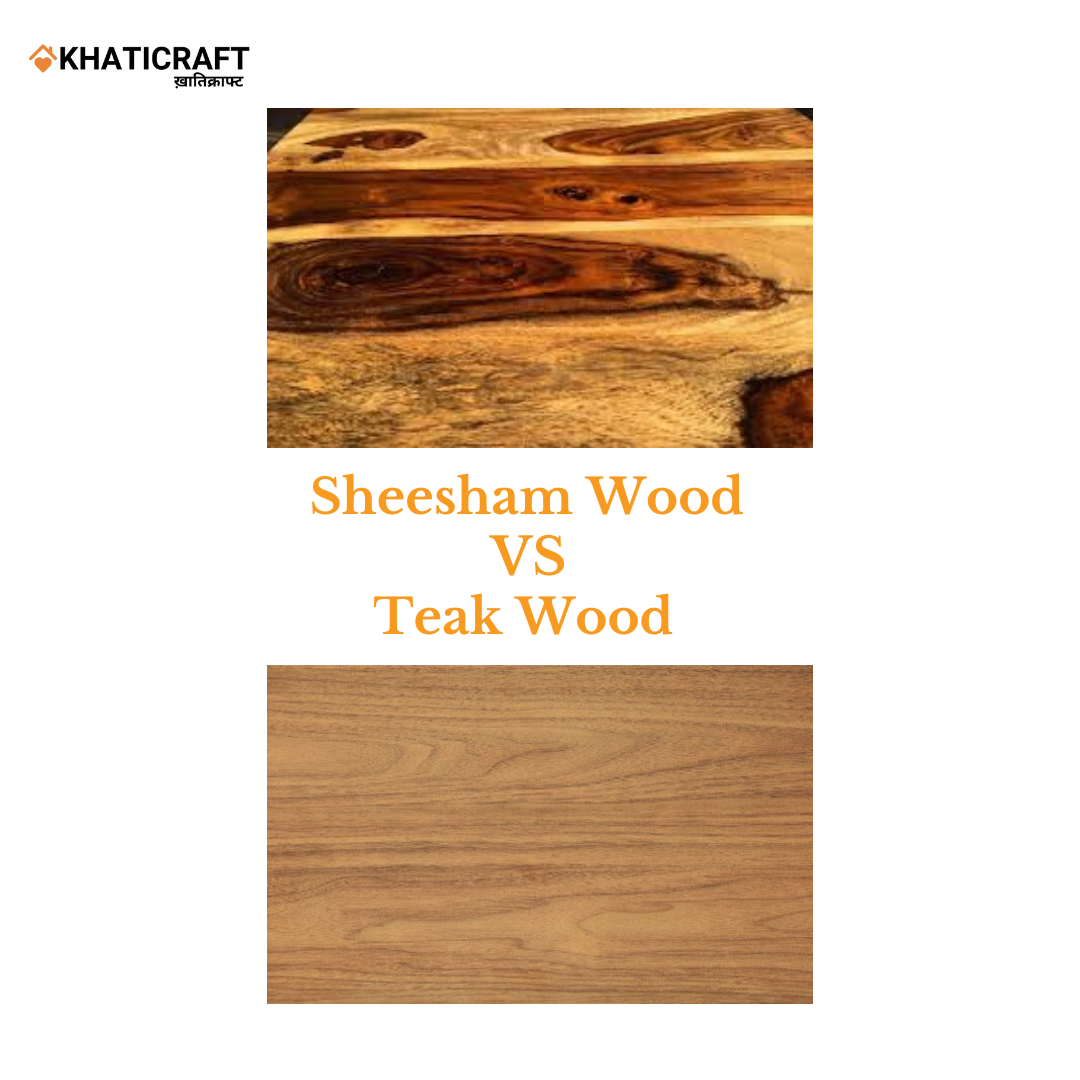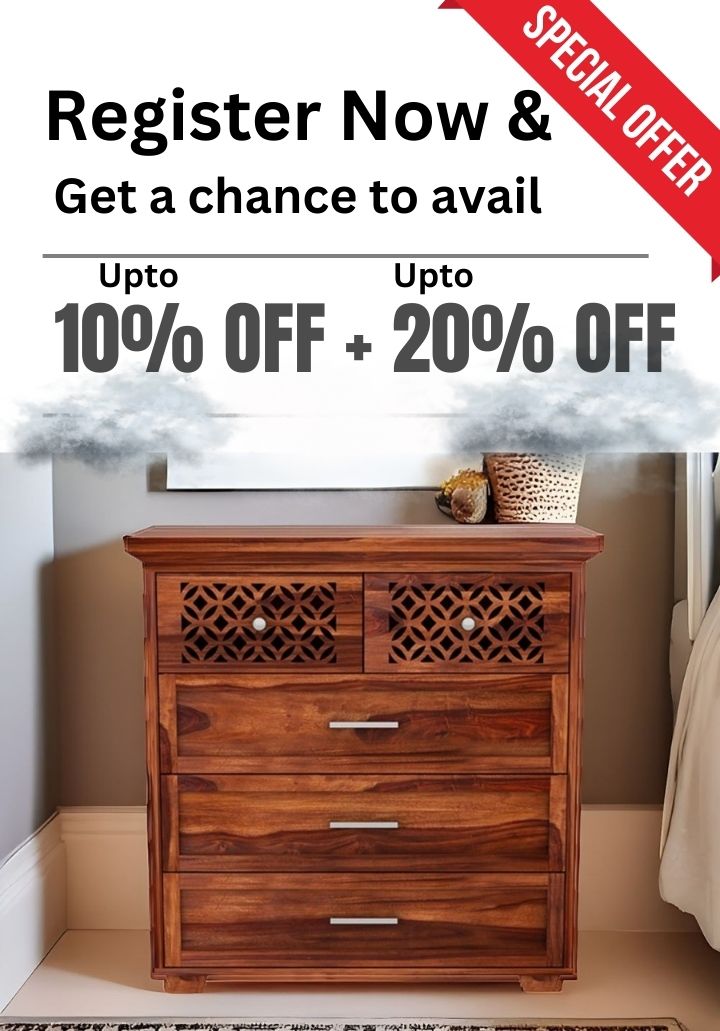Comparing Solid Sheesham Wood and Teak Wood: A Comprehensive Guide
The decision to choose the right kind of wood is not an easy one, especially when there are many options available in the market. Among many, two of the best types of wood furniture include Solid Sheesham and Teak wood. These two hardwoods have gained popularity due to their exceptional qualities, durability, and aesthetic appeal.
In this comprehensive guide, we will discuss teak wood vs sheesham wood, features, benefits, and differences between solid Sheesham wood and Teak wood, that will help you make an informed decision for your next project.
Sheesham Wood Pros and Cons
Sheesham wood, also known as Indian Rosewood (scientifically named Dalbergia sissoo), is a type of hardwood that originates from the Indian subcontinent and parts of Southeast Asia. It is highly valued for its attractive appearance, durability, and versatility. Sheesham wood is commonly used in furniture making, carving, cabinetry, and various woodworking projects.
Benefits of Sheesham Solid Wood Furniture
Durability: Sheesham wood is known for its exceptional durability and resistance to decay, termites, and other pests. It is ideal for crafting long-lasting furniture pieces.
Attractive Grain Patterns: One of the most significant features of sheesham wood is its distinctive grain patterns and rich color variations. This kind of wood often displays various shades of dark brown, reddish-brown, and purplish hues, thereby enhancing the overall aesthetic appeal.
Sturdiness: This hardwood is popular for its strength and sturdiness, making it ideal for constructing furniture that can endure regular use without significant wear and tear. Sheesham wood is the most common type of wood for furniture.
Ease of Carving: Despite its dense nature, this wood is relatively easy to work with using both hand tools and machinery. It can be carved, shaped, and detailed effectively, making it a preferred choice for intricate designs.
Polishing and Finishing: Sheesham wood takes polishing and finishing treatments exceptionally well, resulting in a smooth and lustrous surface. This enhances the overall appearance of the finished product.
Drawbacks of Sheesham Wood
Price: High-quality sheesham wood can be relatively expensive compared to some other wood types due to its durability and aesthetic appeal. To get great deals on this kind of wood, you can check them at khaticraft, online solid wood furniture.
Weight: Sheesham wood is dense and heavy, which can be a drawback for certain applications. Furniture made from this wood can be substantial and challenging to move.
Sustainability Concerns: Due to its popularity, there are concerns about overharvesting and unsustainable logging practices. It's important to ensure that the sheesham wood you purchase is sourced from responsibly managed forests.
Maintenance: Sheesham wood requires regular maintenance to preserve its appearance and durability. It should be protected from moisture, extreme temperatures, and direct sunlight to prevent warping, cracking, or fading.
Allergic Reactions: As with any woodworking, dust generated while working with sheesham wood can cause allergies or respiratory issues in sensitive individuals. Proper safety measures, such as using protective gear and proper ventilation, are important.
Limited Availability: Depending on your location, sheesham wood might not be as readily available as more common wood varieties, affecting your ability to find products made from it.
When considering sheesham wood for your projects, weigh its benefits and drawbacks based on your specific requirements. Ensure that the wood is sourced sustainably to support responsible forestry practices and contribute to environmental conservation.
Teak Wood Pros and Cons
Teak wood is a highly sought-after tropical hardwood known for its exceptional durability, natural beauty, and resistance to various environmental factors. It's obtained from the Tectona grandis tree, which is native to Southeast Asian countries such as India, Myanmar (Burma), Indonesia, and Thailand. Teak wood is used for various purposes, including furniture, boat building, flooring, etc.
Pros of Teak Wood
Durability: Teak wood is renowned for its remarkable durability and resistance to decay, rot, termites, and fungal attacks. This natural durability allows teak furniture and structures to withstand harsh weather conditions, making it ideal for outdoor use.
Natural Oils: Teak wood contains natural oils and silica that provide inherent moisture resistance. These oils help prevent water penetration, making teak wood suitable for marine applications as well.
Attractive Appearance: Teak wood has a rich golden-brown color when newly harvested, and it develops a distinguished silver-gray patina over time when exposed to the elements. This aging process is often considered attractive and enhances the overall character of the wood.
Strength and Stability: Teak wood is known for its strength and stability, making it excellent types of wood for furniture and structures that require structural integrity.
Workability: Despite its density and hardness, teak wood is relatively easy to work with using both hand tools and machinery. It can be cut, carved, and shaped with relative ease.
Low Maintenance: Teak wood requires very less maintenance due to its natural oils and resistance to deterioration. Regular cleaning and occasional oiling improves the overall appearance and extent of this wood.
Cons of Teak Wood
Price: Teak wood is considered a premium hardwood and is often more expensive than other types of wood due to its quality, durability, and popularity.
Sustainability Concerns: The demand for teak wood has resulted in issues related to overharvesting and illegal logging.
Weight: Teak wood is dense and heavy, which many times becomes very challenging while working with it for large or intricate projects. This can also affect the portability of furniture and structures made from teak.
Color Change: While the silver-grey patina that teak develops over time is considered attractive by many, some people might prefer the original golden-brown color. Preventing this color change requires regular maintenance and sealing.
Allergies: As with any woodworking, dust generated while working with teak wood can cause allergies or respiratory issues in sensitive individuals. Proper safety measures are important.
Limited Availability: Genuine teak wood can be harder to find in certain regions, and some products on the market might be labeled as teak but actually be of lower-quality wood.
Other Differences between Teak Wood vs Sheesham
Appearance and Grain Patterns
Solid Sheesham wood, which is also known as Indian Rosewood, boasts a rich reddish-brown hue with dark streaks. Its unique grain patterns vary from straight to wavy and interlocked, lending an artistic touch to the finished product.
On the other hand, Teak wood exhibits a warm golden to medium brown color when freshly cut, aging gracefully into a silvery-gray patina over time. Its straight grain and slightly oily texture contribute to its elegant appearance.
Durability and Strength
Both Sheesham and Teak wood are known for their durability and resistance to decay and insects. Due to their dense nature and natural oils, they can withstand outdoor conditions admirably. Sheesham wood, with its sturdy composition, is an excellent choice for crafting long-lasting furniture pieces.
Teak wood, often referred to as the king of hardwoods, has amazing strength, making it an ideal option for marine applications and outdoor furniture.
Maintenance and Longevity
One of the main benefits of both Sheesham solid wood furniture and Teak wood is their minimal maintenance requirements. Their innate resistance to water damage, pests, and decay ensures that they retain their beauty and integrity for years to come.
Teak wood's natural oils are particularly beneficial, allowing it to age gracefully without the need for constant upkeep.
Price and Affordability
Both Sheesham wood and Teak wood are often associated with luxury due to their scarcity, exceptional properties, and high demand. While it comes at a higher price, the investment can be justified by the longevity and timeless elegance of these types of wood for furniture.
Sustainability and Responsible Sourcing
In an era of increasing environmental awareness, responsible sourcing of wood is crucial. Both Sheesham and Teak wood can be harvested sustainably when managed properly. Look for certifications from organizations like the Forest Stewardship Council (FSC) to ensure that the wood you choose aligns with ethical and eco-friendly practices.
While buying various Sheesham solid wood furniture from Khaticraft, you can stay assured about getting the best types of wood for furniture.
Choosing the Right Types of Wood for Furniture
The decision between Sheesham and Teak wood must be taken after considering your preferences and project requirements. Each wood brings its unique beauty, durability, and character to any project but if you want to give your home a classic and stylish look, Sheesham wood's warm tones and distinctive grain patterns might be perfect for you. So all those homeowners who are ready to invest in premium quality and want a wood that ages gracefully, buy Sheesham wood furniture that is the right fit for their home.
To get the best quality wood furniture for your home, explore Khaticraft online solid wood furniture website and give your home a new look.
FAQ's: Types of Wood for Furniture
What is Sheesham wood, and what is Teak wood?
Sheesham wood is a hardwood sourced from the Indian subcontinent. Teak wood comes from the Tectona grandis tree and is native to Southeast Asia, particularly Indonesia, India, and Myanmar.
What is the main difference between Sheesham and Teak wood in terms of appearance?
Sheesham solid wood furniture has a reddish-brown color with dark streaks and varying grain patterns. Teak wood has a golden to medium brown color when freshly cut, maturing into a silvery-gray patina over time.
Which wood is more durable in types of wood for furniture?
Both Sheesham and Teak wood are highly durable due to their natural oils and density, making them resistant to decay and insects.
Can these woods be used for outdoor furniture?
Yes, both Sheesham solid wood furniture and Teak wood are suitable for outdoor furniture due to their natural resistance to environmental elements.
Which wood is more affordable, Sheesham or Teak wood?
Sheesham wood is generally more affordable than Teak wood, making it a budget-friendly choice for quality furniture.
Can Sheesham and Teak wood be sustainably sourced?
Yes, both woods can be harvested sustainably. Look for certifications such as FSC to ensure responsible sourcing.
Do these woods age differently over time?
Yes, Teak wood ages into a silvery-gray patina, which is often desirable for certain aesthetics. Sheesham wood's color and appearance remain relatively stable.
Which wood is best for luxury furniture?
Sheesham solid wood furniture is often associated with luxury due to its premium price, exceptional properties, and timeless appeal.
Can these woods be used for flooring?
Yes, both Sheesham and Teak wood can be used for flooring due to their durability. Teak's natural oils might provide an edge in moisture-prone areas.
What factors should I consider when choosing between these woods?
Consider your budget, desired aesthetics, intended use, and sustainability preferences when making a choice between Sheesham and Teak wood.
Are these woods suitable for DIY woodworking projects?
Yes, both woods are commonly used in woodworking projects. Sheesham's affordability might make it more accessible for DIY enthusiasts.
Can I stain or finish these woods to change their appearance?
Yes, you can stain or finish both Sheesham and Teak wood to achieve different colors and enhance their natural beauty. Moreover you can also get customized online solid wood furniture from khaticraft.
